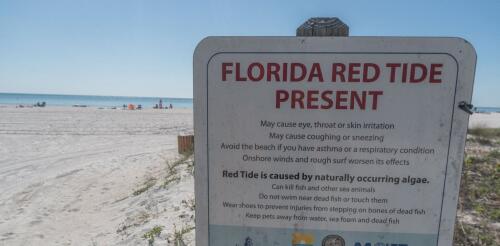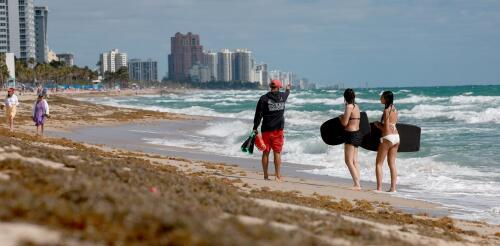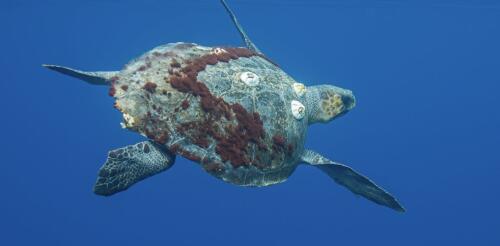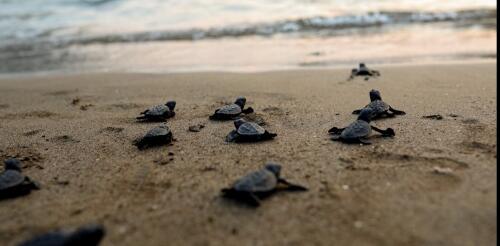Beaches
If you’ve ever waded into the ocean for a swim and suddenly realized that the shore is getting farther away, not closer, you may have encountered a rip current. Common at beaches worldwide, these powerful currents flow from the shore toward the sea at speeds up to several feet per second. It’s important to know what rip currents are and how to look for them, because they are a leading cause of drownings in the surf zone near shore. According to one recent estimate, rip currents have accounted for 435 drownings in the U.S. since 2017. National Weather Service offices that serve coastal communities issue forecasts that predict where and when rip currents are likely to occur. Those forecasts draw on decades of research into the physics of rip currents. Many scholars, including our research group, are finding innovative ways to discover more about rip currents – including their important roles in coastal marine ecosystems. Rip currents a...
Plunging into the ocean or a lake is one of the great joys of summer. But arriving at the beach to find water that’s green, red or brown, and possibly foul-smelling, can instantly spoil the party. As a toxicologist, I study health risks from both synthetic and natural substances. I’ve conducted research into early detection of harmful algal blooms, or HABs, which are an increasing threat to humans, animals and the environment. Toxins produced during these blooms have been implicated in human and animal illnesses in at least 43 states. Scientists have estimated that in the U.S. alone, freshwater HABs cause more than US$4.6 billion in damage yearly. Here’s what to know about them if you’re bound for the water’s edge this summer. Harmful algal blooms have become a regular occurrence along large stretches of Florida’s coast in recent years. Tiny organisms, big impacts Algae and cyanobacteria – often...
An unwelcome visitor is headed for Florida and the Caribbean: huge floating mats of sargassum, or free-floating brown seaweed. Nearly every year since 2011, sargassum has inundated Caribbean, Gulf of Mexico and Florida coastlines in warm months, peaking in June and July. This brown tide rots on the beach, driving away tourists, harming local fishing industries and requiring costly cleanups. According to scientists who monitor the formation of sargassum in the Atlantic Ocean, 2023 could produce the largest bloom ever recorded. That’s bad news for destinations like Miami and Fort Lauderdale that will struggle to clean their shorelines. In 2022, Miami-Dade County spent US$6 million to clear sargassum from just four popular beaches. Satellite image of sargassum concentrations in the Atlantic during the month of March. USF/NOAA, CC BY-ND Sargassum isn’t new on South Florida beaches, but its r...
Many of the ocean’s most charismatic animals spend their lives swimming, flying or gliding thousands of miles, from the coasts to the high seas. Arctic terns, humpback whales and sea turtles are examples. Scientists have spent many years documenting and studying these magnificent journeys. Chronicling where these species go is just the beginning. The next steps are understanding when and how far each animal travels and what triggers it to roam. We are a marine biologist and an evolutionary ecologist and have worked together to study the nesting and migration habits of endangered olive ridley sea turtles (Lepidochelys olivacea). This information is vital for managing the turtles’ recovery – but our research shows that two identical-looking olive ridleys may follow very different paths. Approximate range of olive ridley sea turtles. NOAA Protecting animals that move Mapping the s...
Playing with my children on a beach on Hatteras Island, a barrier island off the coast of North Carolina, I struck up a conversation with a man walking his dog. We were standing next to a turtle nest, which the National Park Service had roped off with a sign stating that the spot was federally protected. “Wouldn’t it be nice to know exactly when the baby sea turtles will come out?” I mused. He smiled and said “Well, we’re working on that.” That conversation generated a partnership to develop TurtleSense, a novel, inexpensive way to monitor turtle nest activity remotely. In a newly published study, we describe how it works. Participants included Eric Kaplan, the man I met on the beach and the founder of the Hatteras Island Ocean Center; David Hermeyer and Samuel Wantman, retired engineers at the San Francisco nonprofit Nerds Without Borders; IBM master inventor Thomas Zimmerman; and veterinary student Joshua Chamberlin. As a developmental n...




